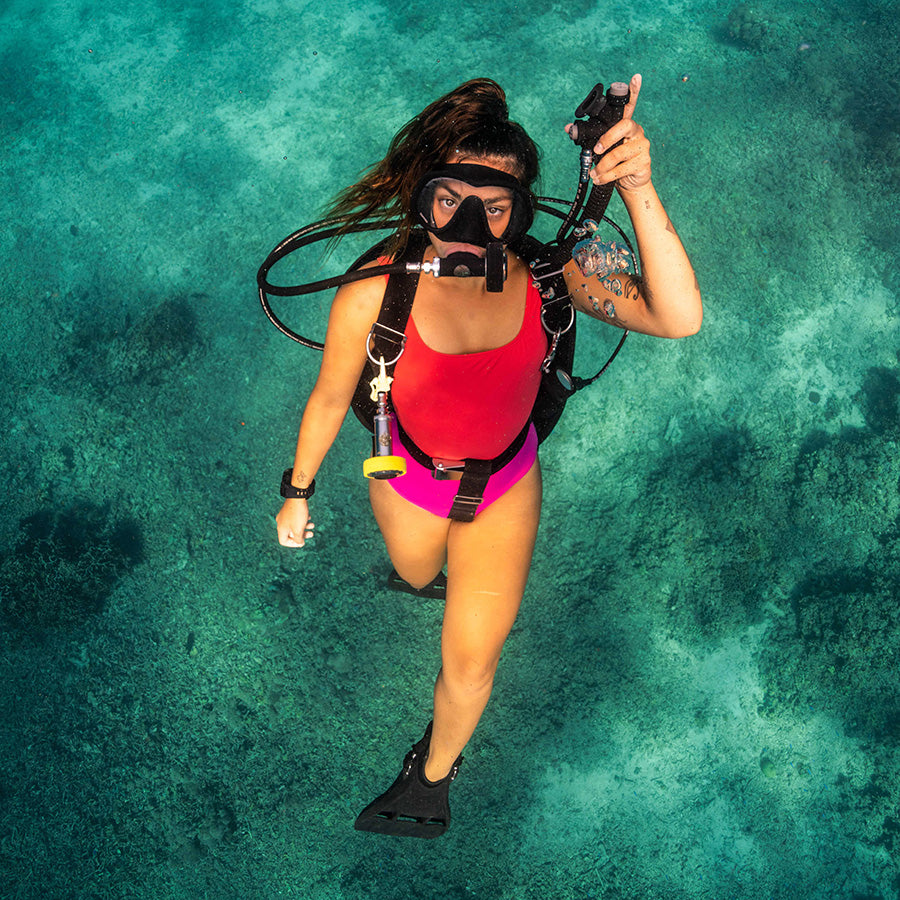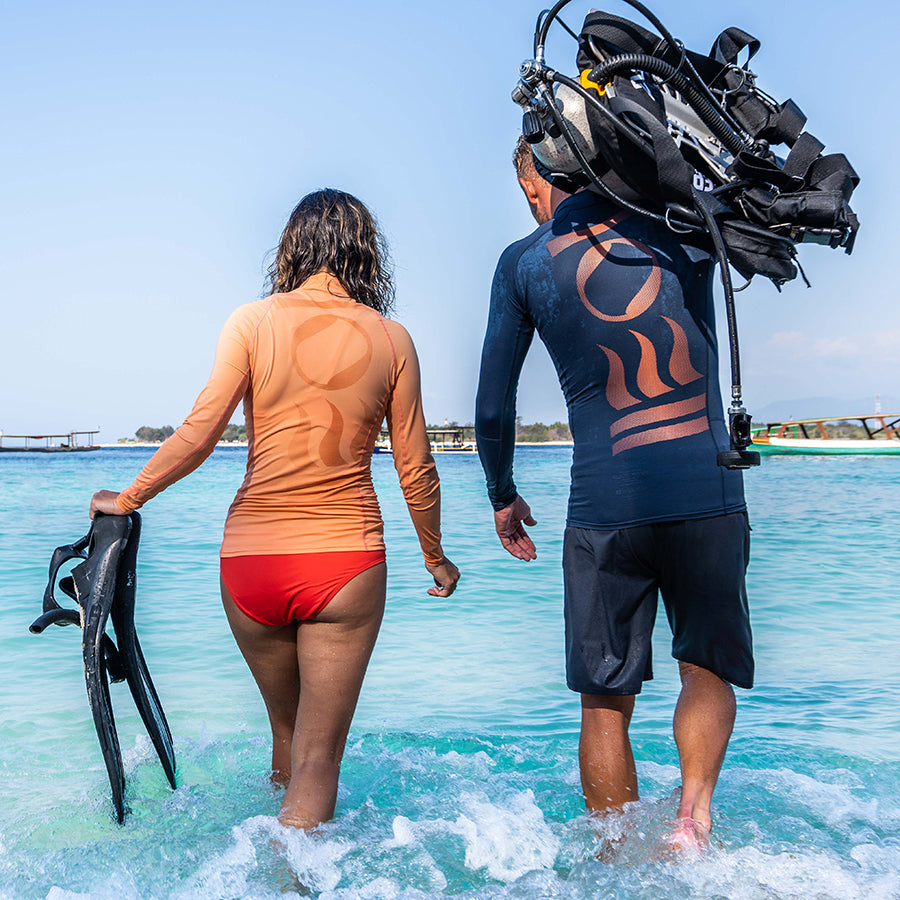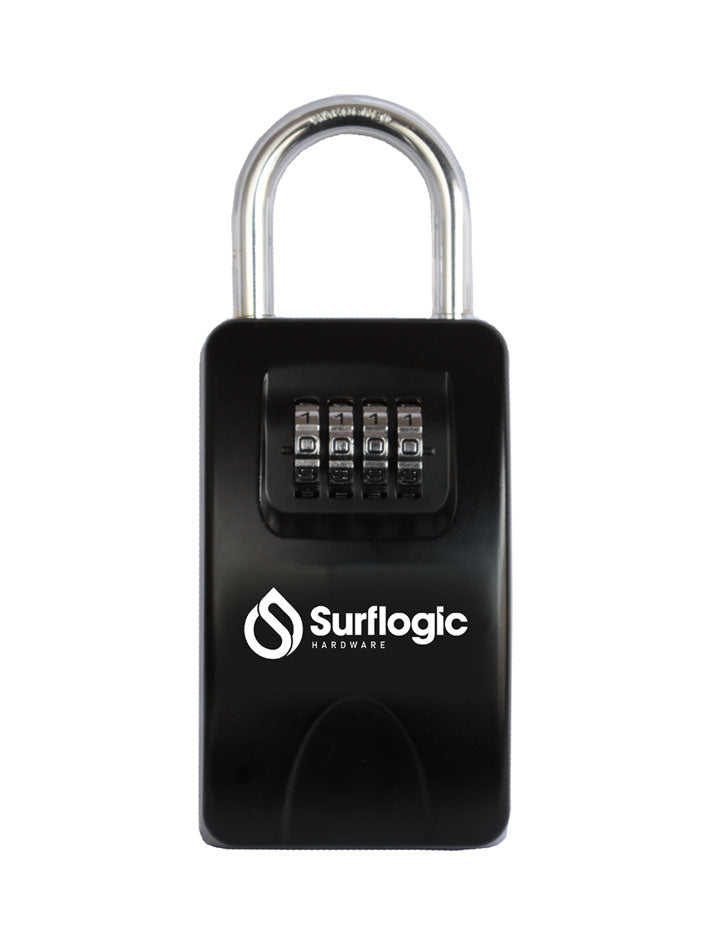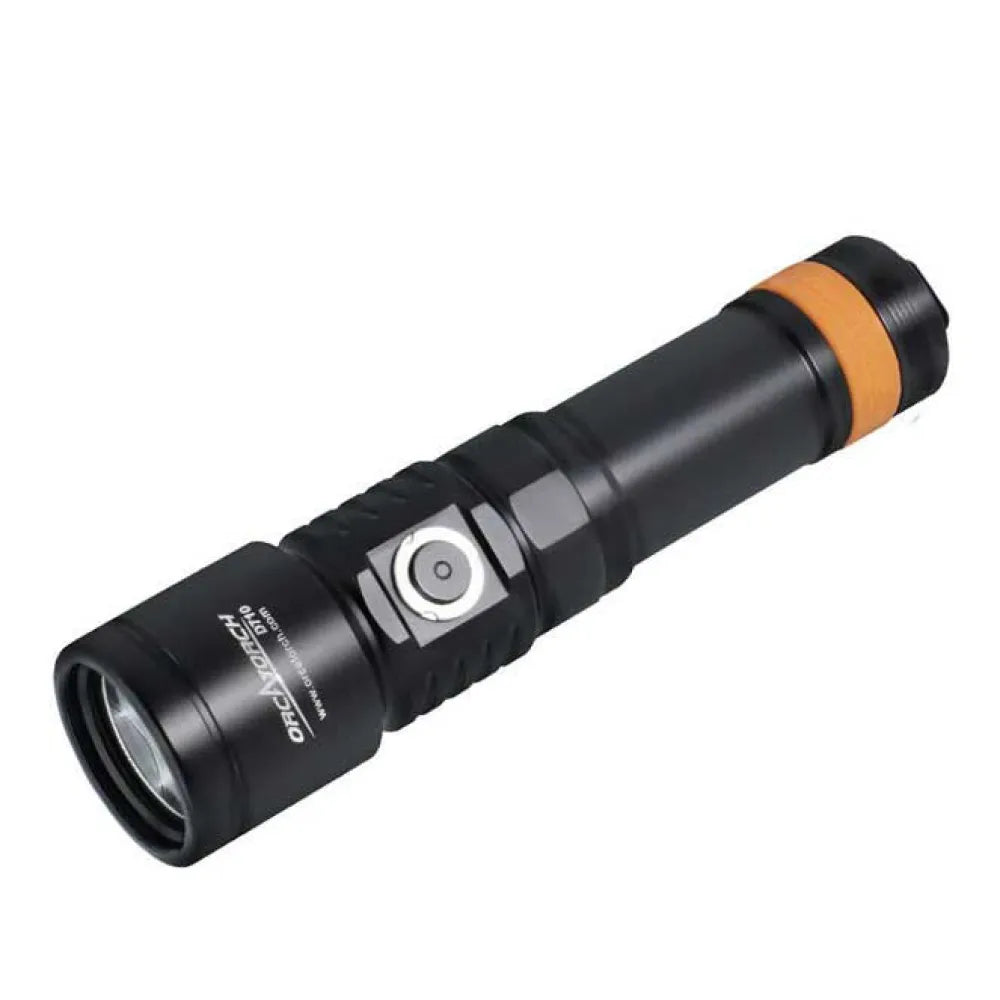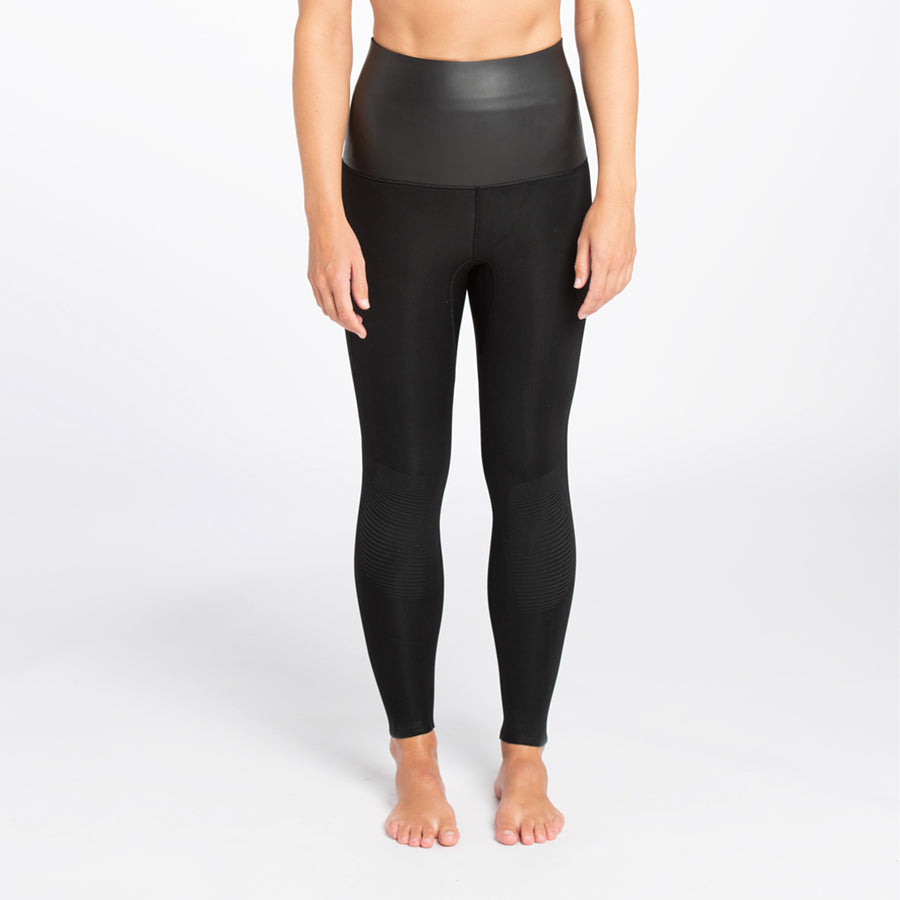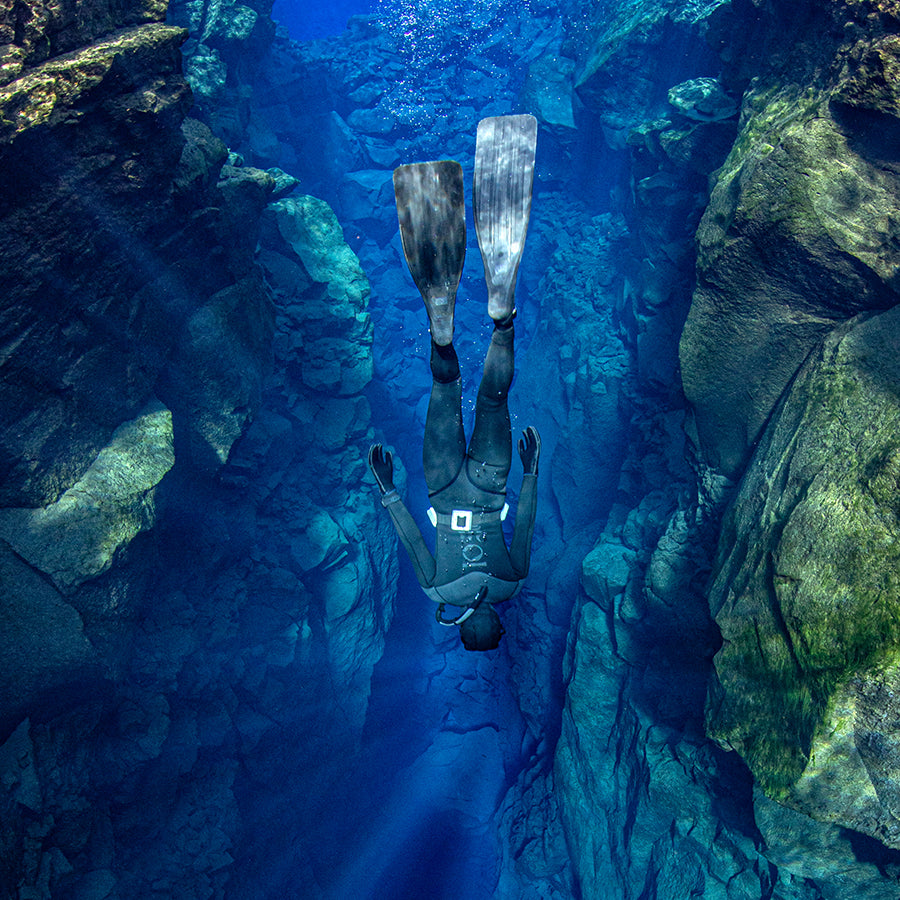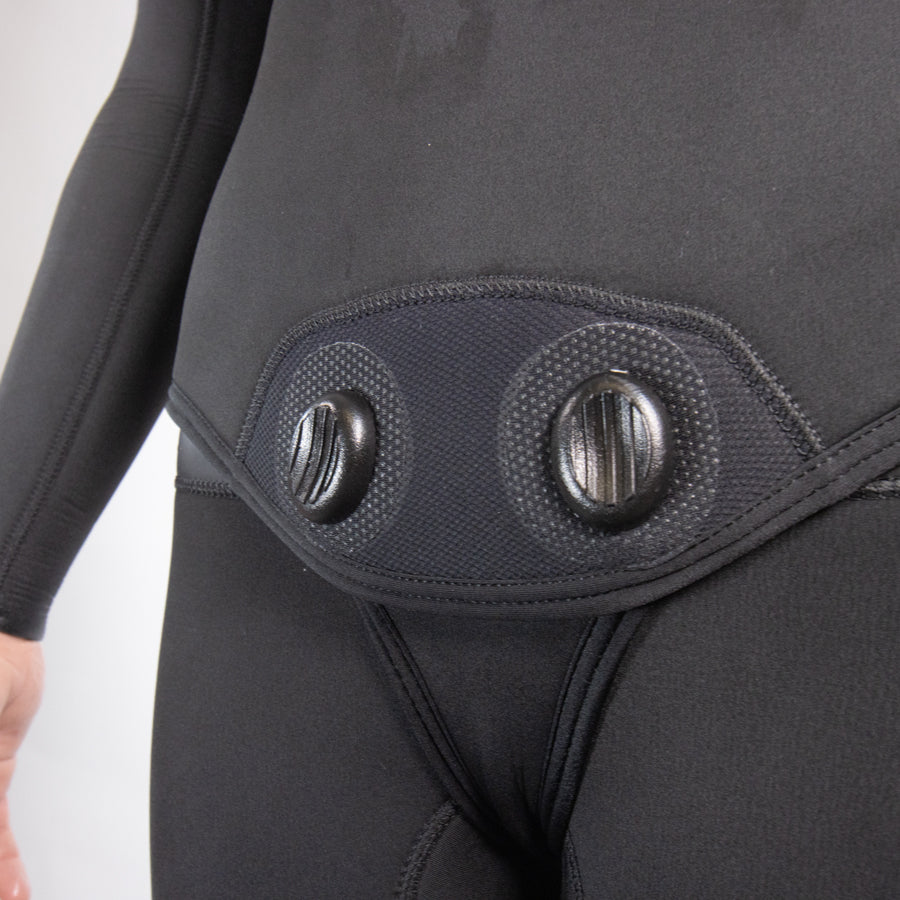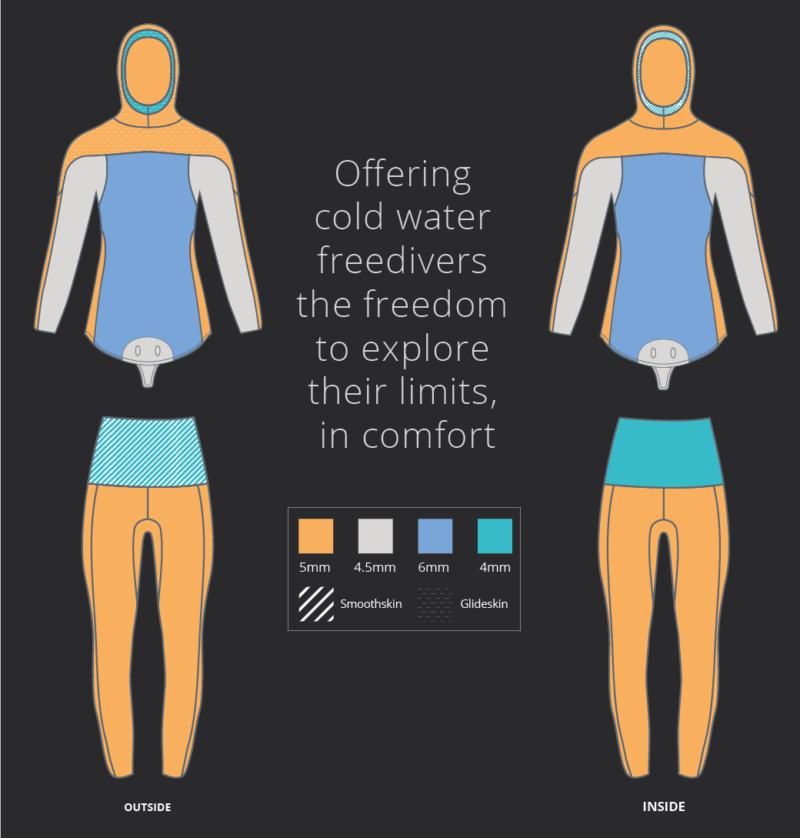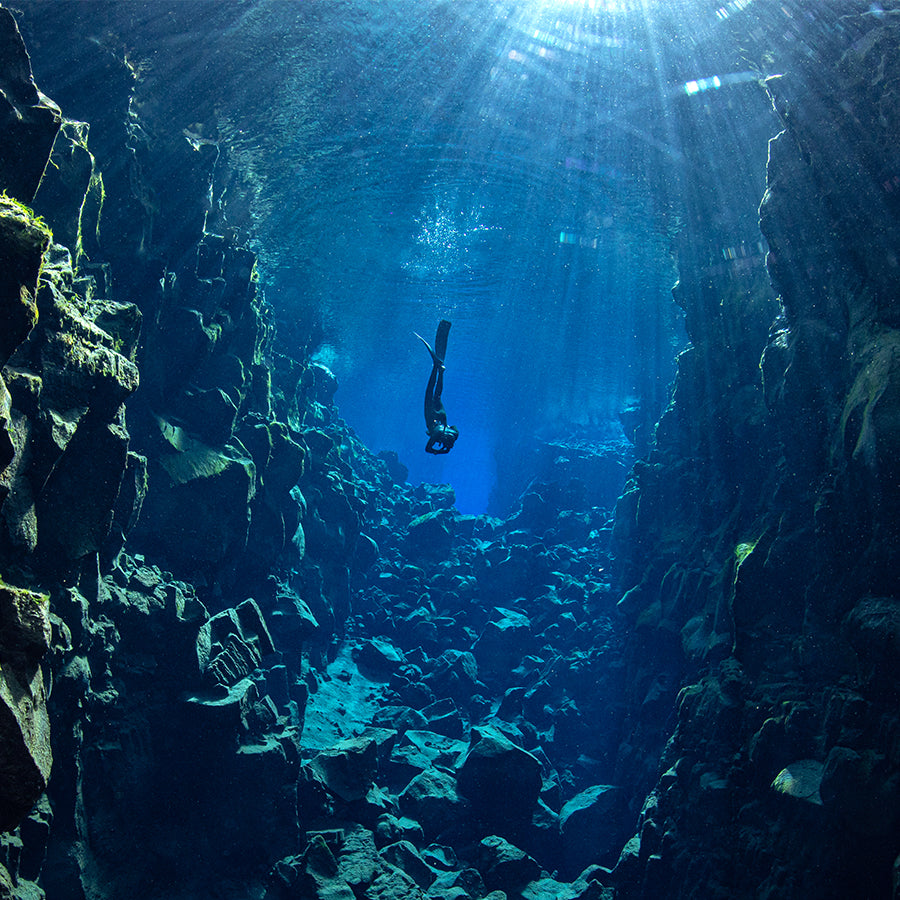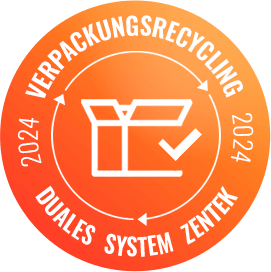Women’s RF2 Leggings 5/4mm
Fourth Element RF2 – Ultimate Cold Water Freediving Wetsuit ✔
✔ Streamlined Fit | ✔ Extreme Warmth | ✔ Durable & Eco-Conscious
The Fourth Element RF2 is a high-performance freediving wetsuit designed for cold water, made up of two separate parts: a jacket (top) and high-waist Leggings (bottoms). Both parts must be selected and added individually to your shopping cart to complete the set.
Developed with input from professional freedivers and instructors, the RF2 combines expert-level thermal protection with comfort, flexibility, and streamlined performance. It features a hybrid 6/5/4 mm thickness, made from eco-conscious limestone neoprene.
The outer surface is lined for durability around the core, arms, and legs, while the smooth skin on the hood and shoulders reduces drag underwater. Inside, the Metalite-coated smooth cell interior offers superior insulation and increased durability compared to traditional open-cell suits. The beavertail closure provides a secure and comfortable fit.
Please note: this is a two-piece wetsuit. You must add both the jacket and the pants separately to your cart, and you can choose different sizes for each part to get the perfect fit.
Tip: For easy donning and doffing, we recommend using an eco-friendly wetsuit lubricant that won’t harm your skin or the environment.
Collapsible tab content
Fourth Element wetsuits
RF - when 20 years of pioneering work in the field of underwater thermal protection meets freediving performance.
Maximise your freedom in the water, just focus on your breath. Forgot you are wearing any equipment and reach your limit.
Features
Recycled Rubber
One of the key ingredients of neoprene, Eco Carbon Black, is recycled by our wetsuit factory from post-consumer scrap tyres. This significantly reduces energy consumption and cuts CO2 emissions by 200g per wetsuit.
Limestone Neoprene
During the neoprene production process, limestone is used to replace petrochemicals to form rubber chips. You achieve the same performance as traditional neoprene, but with way less environmental impact.
Resources
After the neoprene creation process, the redundant trimmed materials will be recycled and reused in the mixing process to produce more neoprene sheets. Overall huge amounts of raw materials are saved, energy consumption is reduced and waste water and air emissions are minimised during production.
Safe waters - Dope-Dyed Yarn
Dope-Dyed Yarn
The yarn in this garment is dope-dyed, a process of infusing dye pigments into a molten plastic solution to produce coloured yarns. This saves vast amounts of water whilst reducing energy consumption and water pollution.





